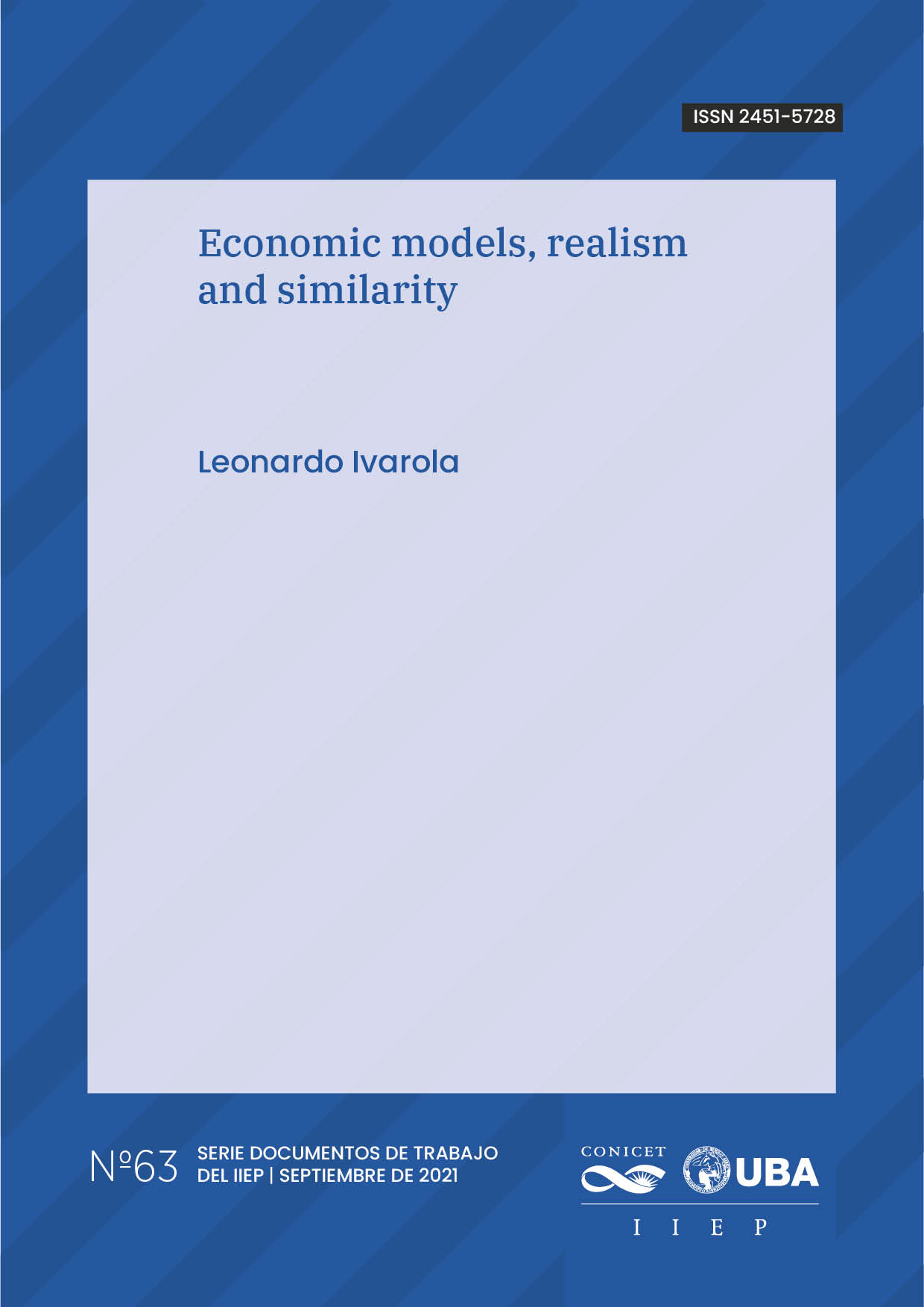Modelos económicos, realismo y similaridad
Resumen
En el presente artículo se argumenta que las diferencias entre los modelos económicos son básicamente diferencias en la parte seleccionada del mundo real que estos modelos tratan de explicar. Por lo tanto, su rango de aplicabilidad a un sistema objetivo resulta ser importante para su selección para propósitos particulares. A este respecto, se proporciona un enfoque basado en la similaridad de los modelos con un sistema objetivo y con los propósitos de los modeladores. También se argumenta que los modelos varían en valores de similaridad. Estos valores ayudarán a los agentes a seleccionar el modelo que mejor se adapte a la función de examinar algún fenómeno de interés.
Citas
Cartwright, N. (1995). Ceteris Paribus Laws and Socio-Economic Machines. Monist, 78(3), 276-294.
Cartwright, N. (1999). The Dappled World. Cambridge: Cambridge University Press.
Cartwright, N. (2007). Hunting Causes and Using Them–Approaches in Philosophy and Economics. Cambridge: Cambridge University Press.
Cartwright, N. (2009). If no capacities then no credible worlds. But can models reveal capacities? Erkenntnis, 70(1), 45-58.
Cartwright, N., & Efstathiou, S. (2011). Hunting Causes and Using Them: Is There No Bridge from Here to There? International Studies in the Philosophy of Science, 25(3), 223-241.
Cypher, J., & Dietz, J. (1998). Static and Dynamic Comparative Advantage: A Multi-Period Analysis with Declining Terms of Trade. Journal of Economic Issues, 32(2), 305-314.
Emmanuel, A. (1972). Unequal Exchange: A Study of the Imperialism of Trade. New York & London: Monthly Review Press.
Kuorikoski, J., & Lehtinen, A. (2009). Incredible Worlds, Credible Results. Erkenntnis, 70(1), 119-31.
Kuorikoski, J., Lehtinen, A. & Marchionni, C. (2010). Economic Modelling as Robustness Analysis. British Journal for the Philosophy of Science, 61(3), 541-567.
Mäki, U. (1992). On the Method of Idealization in Economics. Poznan Studies in the Philosophy of the Sciences and the Humanities, 26, 319-354.
Mäki, U. (ed.) (2002a). Fact and Fiction in Economics. Models, Realism, and Social Construction. Cambridge University Press. New York.
Mäki, U. (2002b). The dismal queen of the social sciences. In Mäki 2002a (ed.), Fact and Fiction in Economics. Models, Realism, and Social Construction. Cambridge University Press. New York, 3-32.
Mäki, U. (2005). Models are Experiments, Experiments are Models. Journal of Economic Methodology, 12(2), 303-315.
Mäki, U. (2009a). Missing the world: Models as Isolations and Credible Surrogate Systems. Erkenntnis, 70(1), 29-43.
Mäki, U. (2009b) Unrealistic assumptions and unnecessary confusions: Rereading and rewriting F53 as a realist statement, The Methodology of Positive Economics: Reflections on the Milton Friedman Legacy, Mäki, U. (ed.), Cambridge: Cambridge University Press, 90-116.
Morgan, M. (2012). The World in the Model. How Economists Work and Think. Cambridge University Press.
Morgan, M., & Morrison, M. (1999). Models as Mediators. Cambridge: Cambridge University Press.
Musgrave, A. (1981). Unreal Assumptions in Economic Theory: The F-Twist Untwisted. Kyklos, 34(3), 377-387.
Pfleiderer, P. (2018). Chameleons: The Misuse of Theoretical Models in Finance and Economics. Economica. In press.
Prebisch, R. (1950). The Economic Development of Latin America and Its Principal Problems. New York: United Nations.
Rodrik, D. (2015). Economics Rules: The Rights and Wrongs of the Dismal Science. New York: W.W. Norton.
Singer, H. (1950). The distribution of gains between investing and borrowing countries. American Economic Review, 40(2), 473-485.
Shaikh, A. (1979). Foreign Trade and the Law of Value: Part I. Science & Society, 43(3), 281-302.
Shaikh, A. (1980). Foreign Trade and the Law of Value: Part I. Science & Society, 44(1), 27-57.
Weisberg, M. (2013). Simulation and Similarity. Using models to Understand the World. New York: Oxford University Press.




